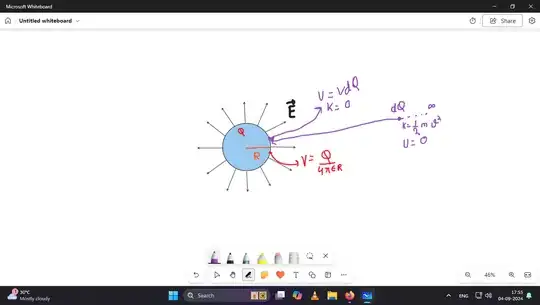I know that charge inside a conductor should be zero and because of which all the charge of a charged conductor gets evenly distributed on its surface. But my question is:
If we take a charged spherical conductor,lets say of radius$\ R$ and charge $\ Q$, the spherical conductor acts as if the total charge on it is at its center so the charge $\ Q$ develops a potential at the surface of the conductor $\ V =$ $\frac{Q}{4 \pi \epsilon_{0}R}$ where $\epsilon_{0}$ is the absolute permittivity of free space now if we want to bring a small charge $dQ$ from $\infty$ to its surface, it would have to raise its potential energy by $VdQ$ now if, at infinity if we gave it some kinetic energy that totally converts to potential energy at $\ R$, $\ K$ $\ = \frac{mv^{2}}{2}$ $\ = \frac{Q}{4 \pi \epsilon_{m}R}$ after the $\ K$ of the small charge became$\ 0$ at$\ R$ it would want to decrease its potential energy and would start accelerating in the direction of electric field which was due to the charge on the conductor and hence should leave the conductor. Why is this not the case in reality?
